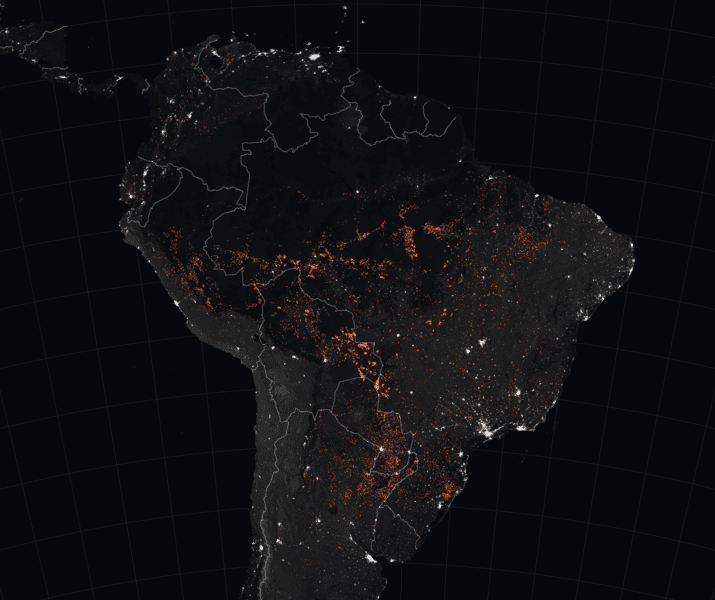The fires that raged across the Bazilian Amazon were far from normal, despite what the local government would have you believe.

Image credits by Joshua Stevens / NASA Earth Observatory.
While the Amazon fires made headlines across the world, and galvanized public outrage and activism this summer, the Brazilian Government claimed that they were ‘normal’ for August and ‘below the historical average’. A new study shows that this is, basically, an outright lie — and that government-backed deforestation could be the cause.
According to the findings, the number of active Amazon fires in August was three times higher than in 2018, and the highest number seen since 2010.
Ample blaze
“The marked upturn in both active fire counts and deforestation in 2019 therefore refutes suggestions by the Brazilian Government that August 2019 was a normal fire month in the Amazon,” says Professor Jos Barlow, lead author of the paper.
The team reports that, although fires in the Amazon can start in a number of ways, they found strong evidence in support of deforestation fostering the 2019 fires. The researchers used data collected from the Brazilian Government’s DETER-b deforestation detection system, which calculates deforestation by interpreting images taken by NASA satellites.
In July of 2019, the Brazilian Amazon saw four times as much deforestation by area as the average for the same period over the previous three years. The team explains that deforestation is almost always followed by fires, as cut vegetation is left to dry before being burned.
“Brazil has for the past decade been an environmental leader, showing to the world that it can successfully reduce deforestation. It is both economically and environmentally unwise to revert this trend,” adds Professor Barlow.
The link between deforestation and fires is strengthened by the fact that the August fires occurred in a period without a serious drought, which foster wildfires. The team further explains that the tall smoke plumes released by the fires strongly indicate that they were generated by large quantities of burning biomass. As the Amazon rainforest is a very wet environment, this strongly points to cut-and-dried plants as their likely fuel.
By September, the team writes, the number of active fires decreased by 35%. Although President Bolsonaro instituted a two-month moratoria on fires prior to this drop, the team is unsure whether the decline was due to the decision itself or due to heavy rains that occurred in that period. Still, the number of fires alone doesn’t accurately capture the full extent of the damage; the team explains that while the number of fires was counted, their extent was not.
“Our paper clearly shows that without tackling deforestation, we will continue to see the largest rainforest in the world being turned to ashes. We must curb deforestation,” says Dr Erika Berenguer, a co-author of the study.
The paper “Clarifying Amazonia’s burning crisis” has been published in the journal Global Change Biology.


